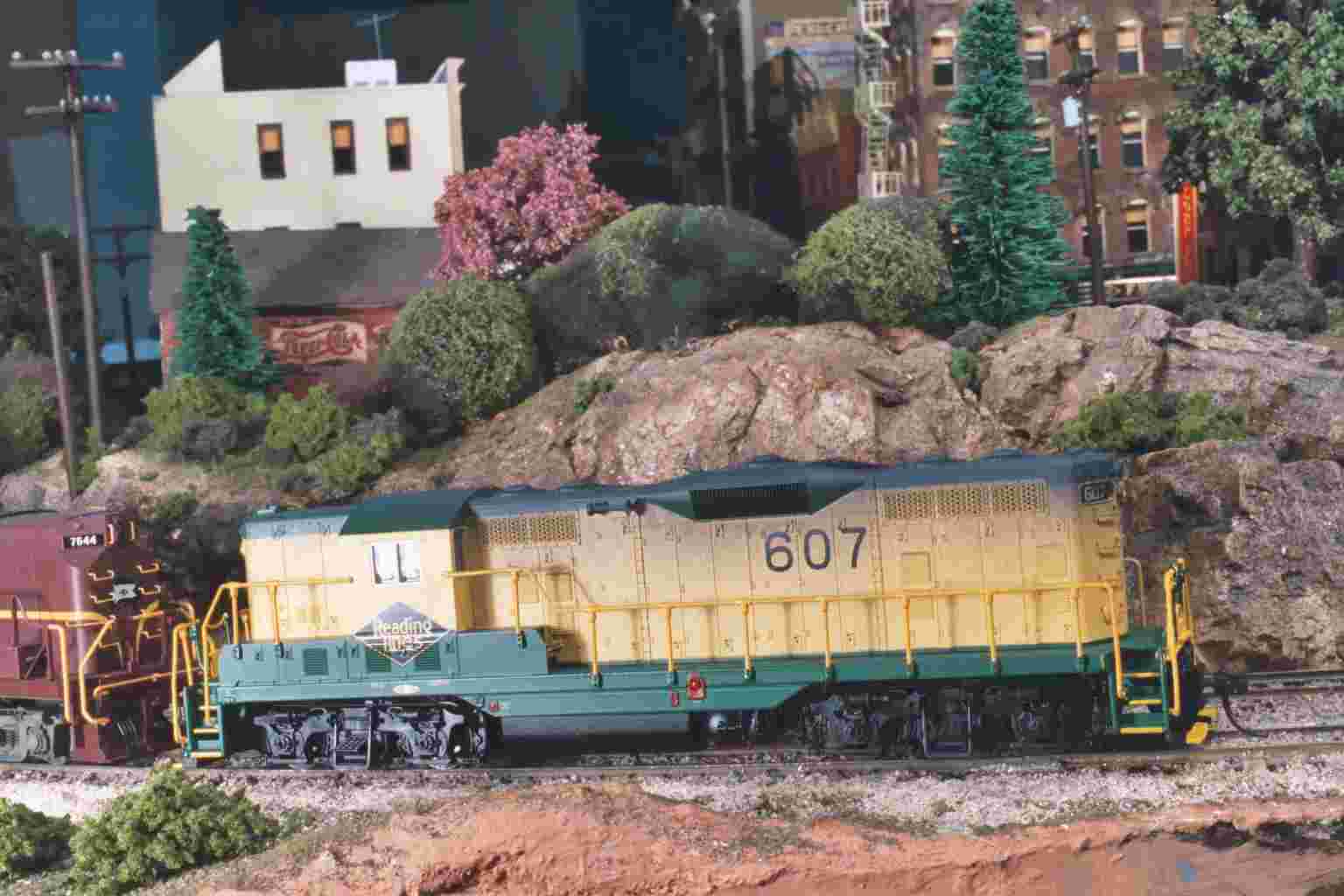 West Local Leaving Zenith Yard |
Like the East Local, which serves eastbound trailing point industries, the West Local serves industries that have trailing point spurs for westbounds. It follows the whole main line, with work at West Zenith, Woollett, Tennessee Pass, Terrible, Cantil, and Bay City.
The West Local is leaving Zenith in this early-Conrail sequence of photos, with ex-Reading GP7 607 and ex-Lehigh Valley RS-11 7644, neither yet renumbered or repainted. The local is overpowered, with two units hauling 5 cars and a cabin.
Conrail has added the extra unit for reliability. The steady 2% grade from Zenith to Tennessee Pass is visible in this shot.
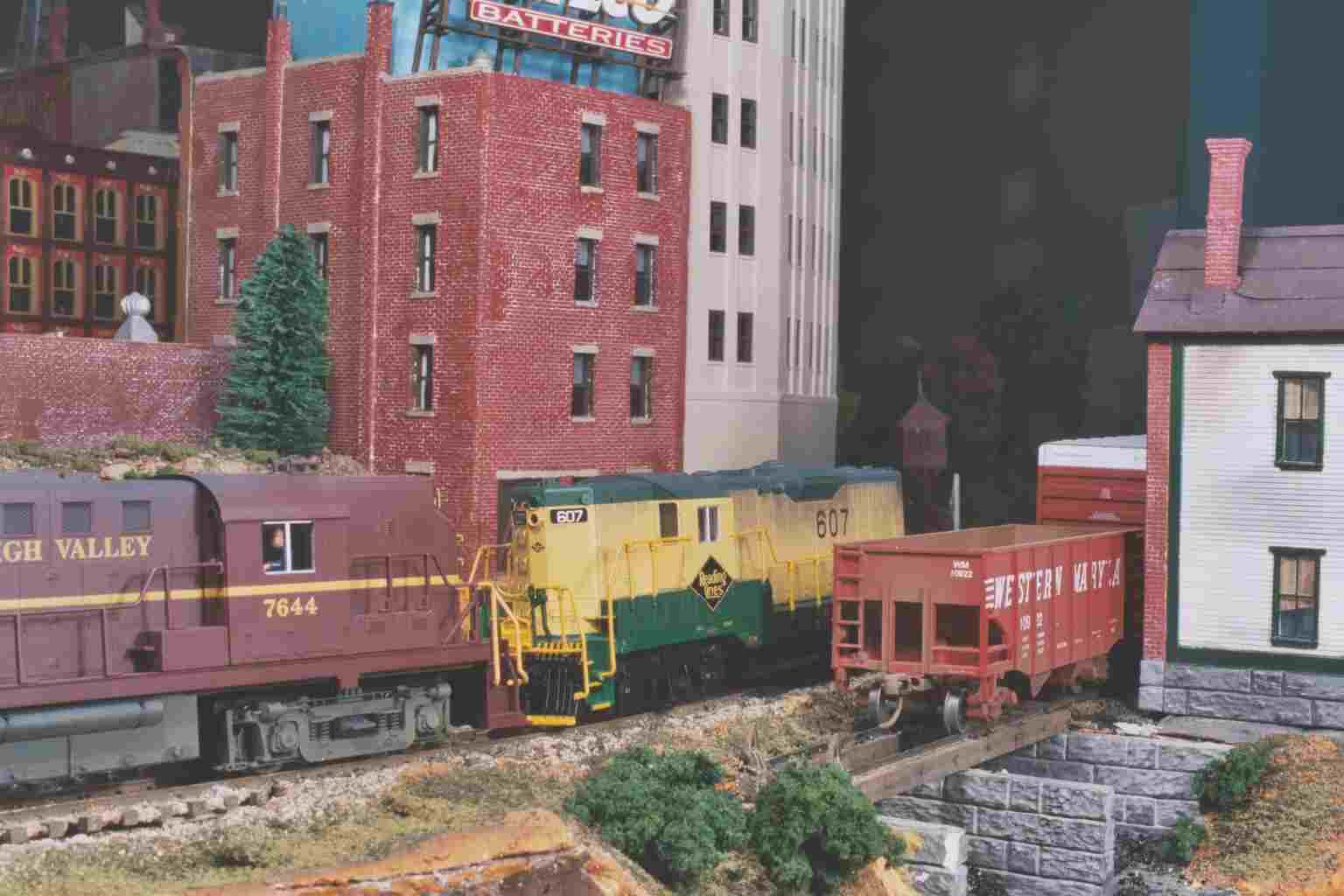 West Local Arriving West Zenith |
The local rounds the sharp curve out of Zenith Yard and into West Zenith, where its first work is to pick up the WM hopper that you can see on the right at City Coal and Fuel. It will also pick up a CP Rail box at Zenith Knitting Mills, which shares the spur with City Coal, and it will drop a loaded Virginian hopper there, as well as a Seaboard box car at Zenith Knitting Mills.
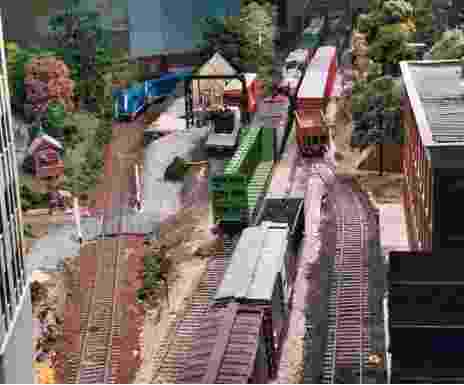 West Local Switching City Coal and Zenith Knitting Mills |
The local has to pull the whole spur to get at the empty WM hopper. We can see it doing this here. There is a D&RGW RBL that will stay at Zenith Knitting Mills and an SP lumber box that will stay at City Coal and Fuel, so everything needs to be rearranged on this spur. The cut of cars to the left of the local is overflow from Zenith Yard sitting on the number 2 main. The track running from bottom left to upper left is the Zenith Connector, still with B&M GP7s laying over on it.
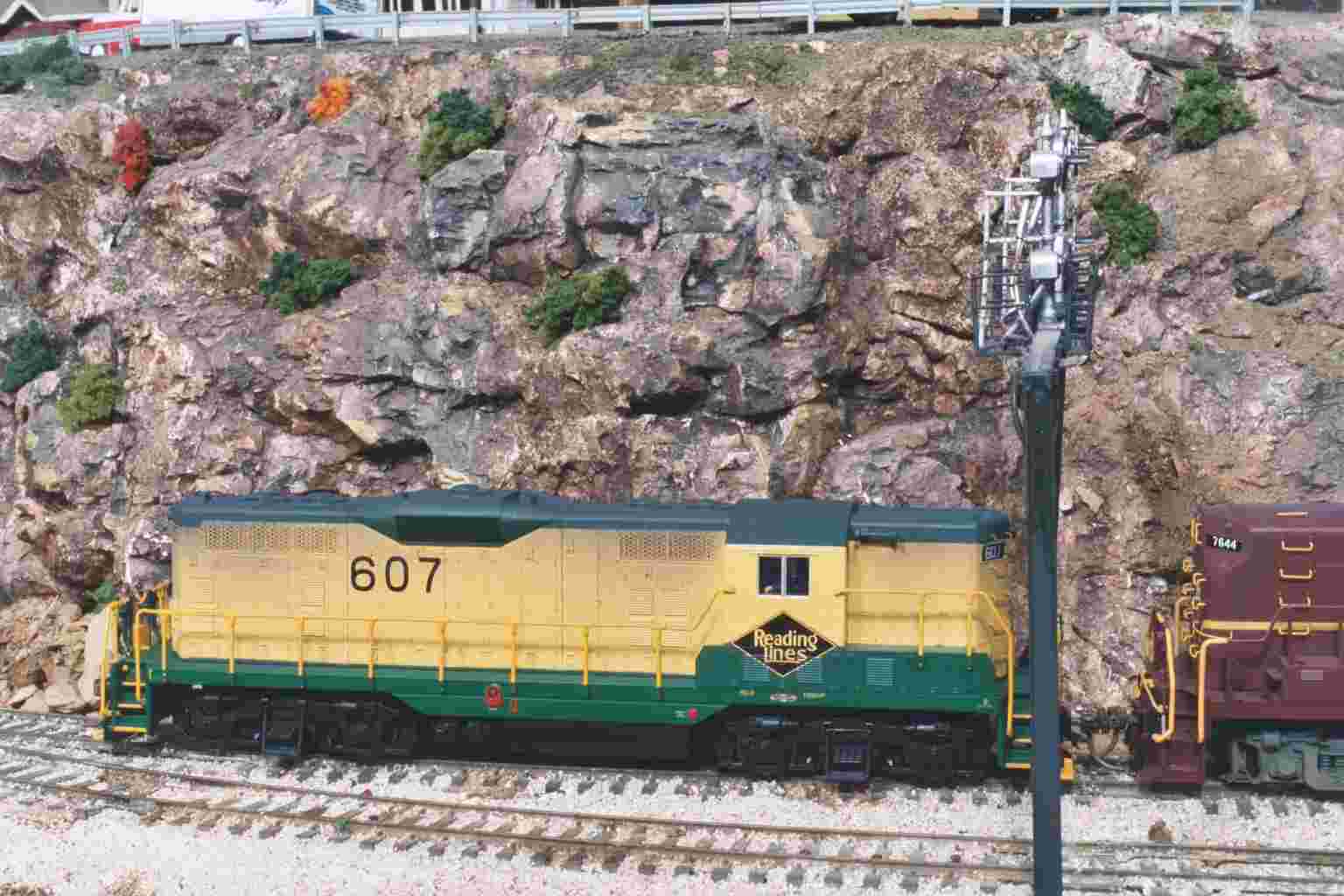 West Local at Rattlesnake Rocks |
Leaving West Zenith, the West Local passes over the eastbound main and reaches the end of the double track main line at CP 6. The signal bridge is just behind the GP7. The east portal of Tunnel 1 is just past the switch ahead of the train.
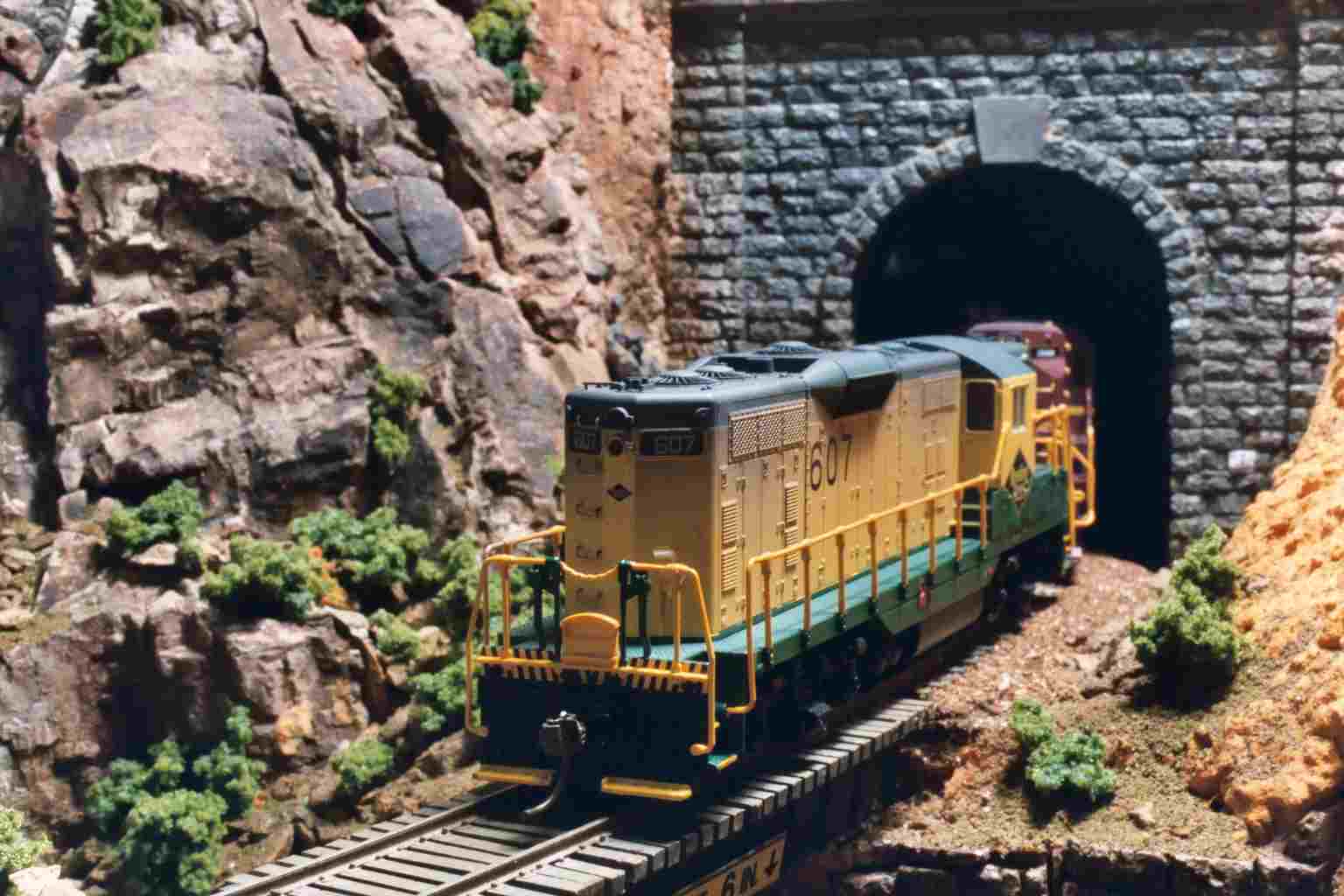 West Local leaving Tunnel 1 |
Here the local is leaving 128-foot Tunnel 1 and entering Woollett.
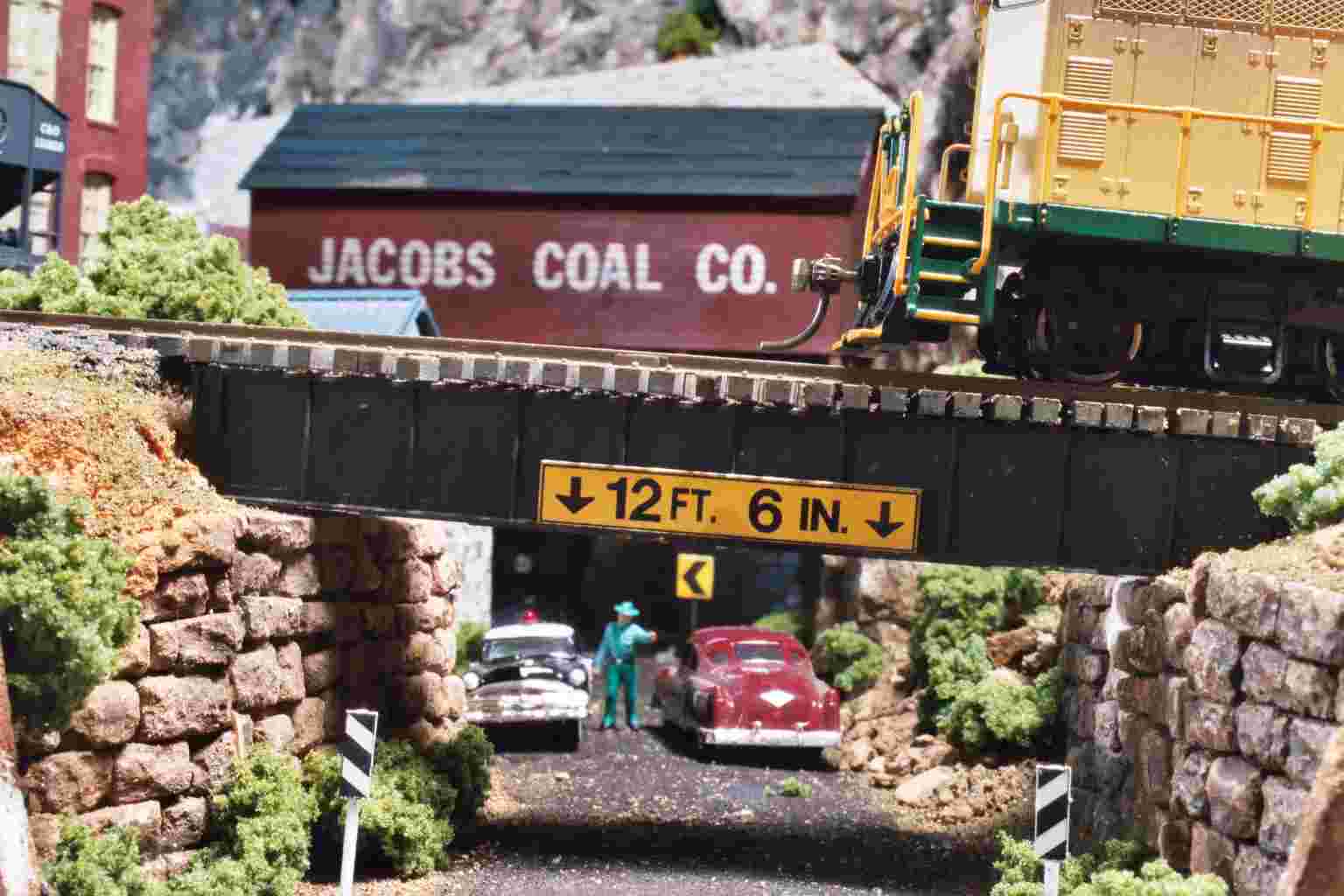 West Local on State Route 17 bridge. The officer in view is presumably not with the Model Railroad Police. |
The 2% grade is again very visible here.
I was really impressed with Lou Sassi's project layout in the December 1992 Model Railroader, an article called "Building the Berkshire Division". I was so impressed with it that I stole his plan. The biggest changes were that I increased the main line curve radii to 30 inches, and I did away with the return loop at the rear of the project layout. As Lou said in his article, "The Model Railroad Police certainly won't come knocking on your door if you do some things your way." I kept the track plan for the town, "Cornwall Bridge", almost exactly as it was in the article, but changed the name to "Woollett". The prototype has now gone from the New Haven's Berkshire Division to a more generic New England location. I changed some of the structures and scenery and kept others as they were in the article.
I started working on Woollett's scenery seriously about five years before these photos were taken. While the work has been off and on, it's taken this long to get things about 90 percent complete. This gives me a lot of respect for the team that put together the "Berkshire Division" layout, which was at a higher level of execution in the MR article, and which still inspires me.
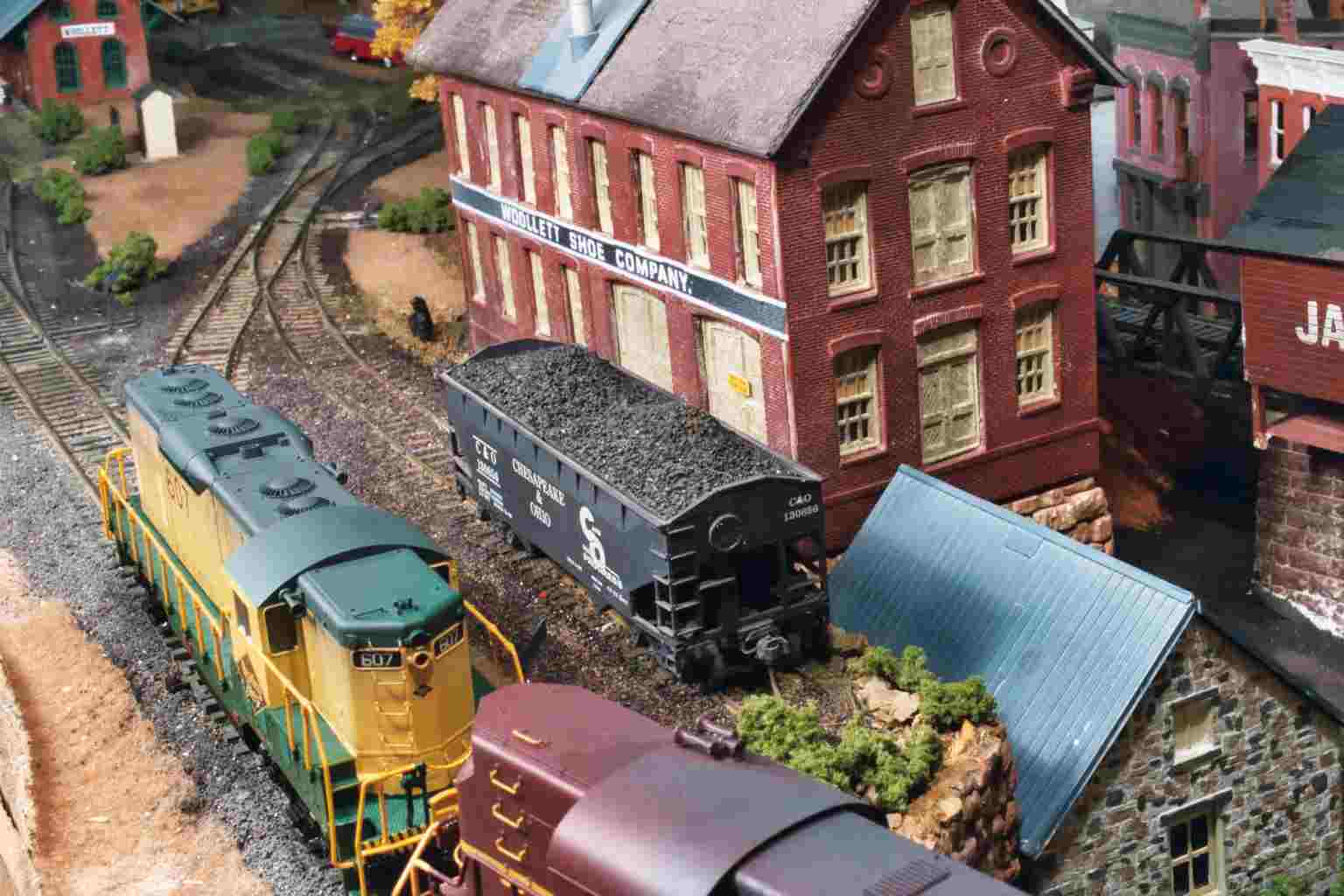 West Local arriving Woollett |
As it's turned out, the Sassi track plan is a fascinating switching puzzle that I always enjoy working. We'll follow the steps the local takes in doing its work here. Note, though, that this is an easy day, because there's only one industry to switch.
At left, the local is pulling into town past the Woollett Shoe Company. The only work in town is to pick up an empty tank car and hopper at the Jacobs Coal Company, but it's a complicated job.
The Woollett Shoe Company is a Railway Design Associates kit. This seems to have gone to Ertl as part of their short-lived and somewhat strange venture into model railroading. I don't know if RDA still makes this kit, but I like it better in Woollett than some of the structures Lou Sassi originally put in "Cornwall Bridge". The power house at the lower level is in the spirit of the original RDA design. It's waiting for a Walthers Cornerstone smokestack.
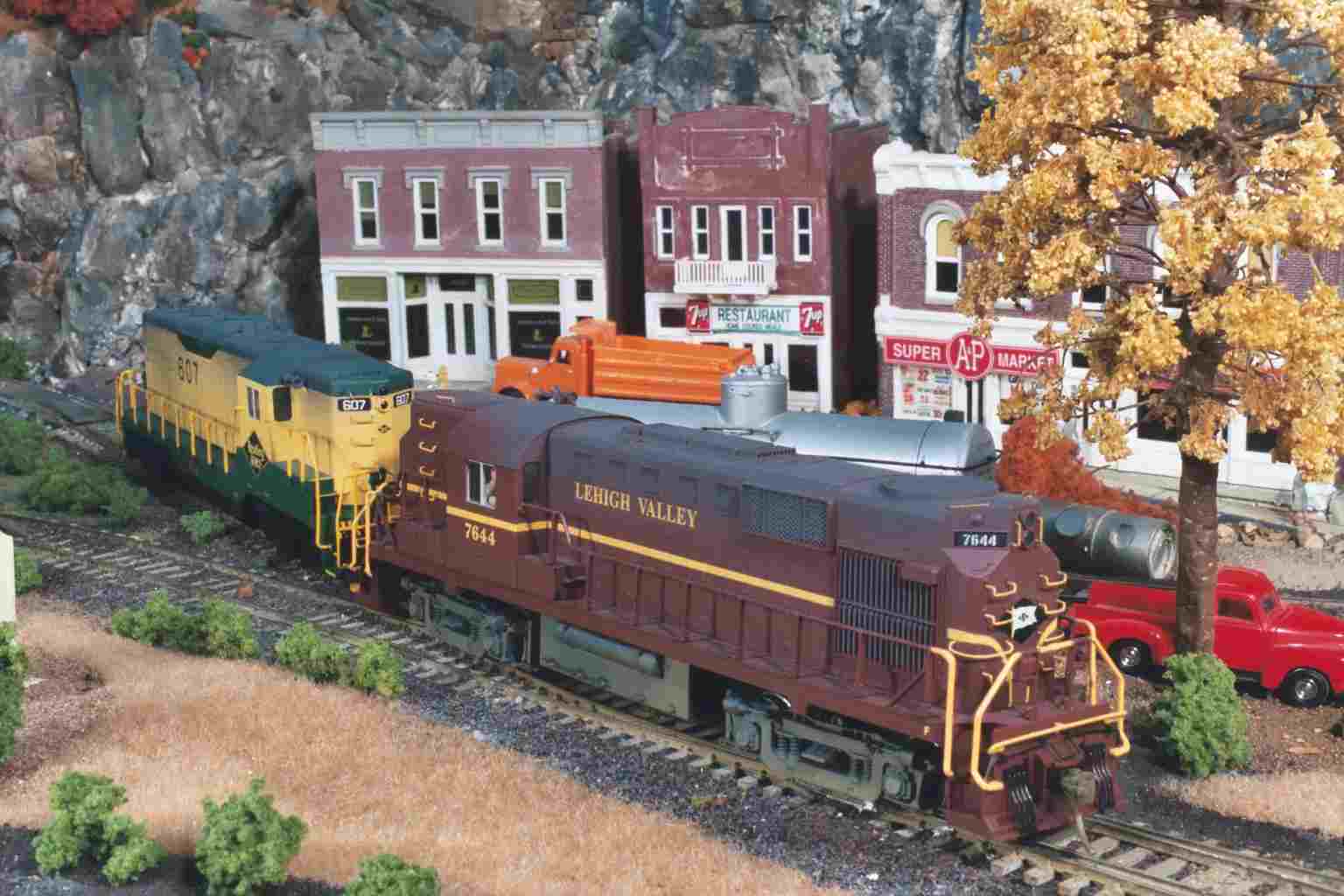 Power about to pull boxcar from American Tool and Die |
The power for the local has cut off the train and is heading to American Tool and Die to move a boxcar that's in the way.
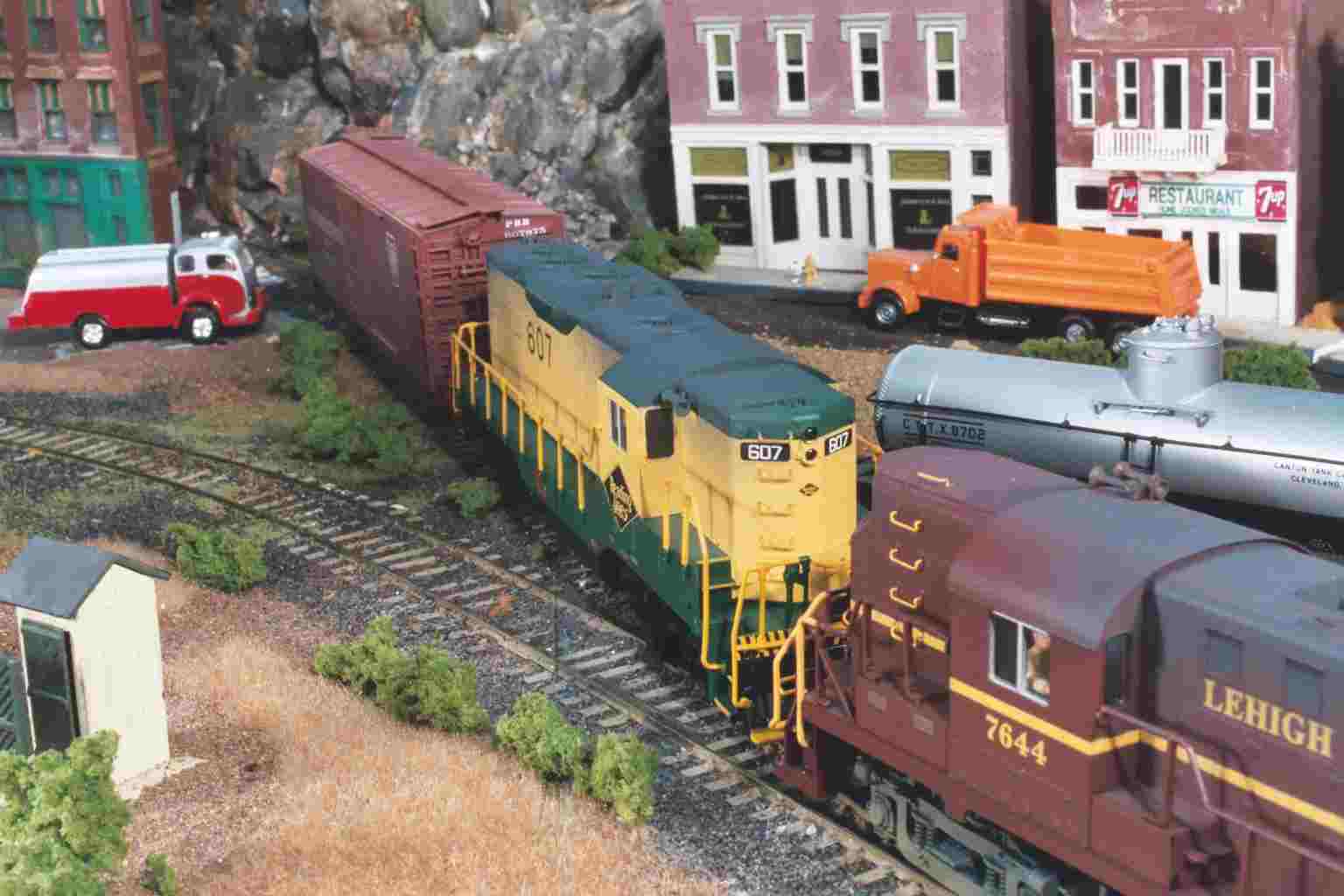 Pulling the boxcar from American Tool and Die |
There's just enough clearance on the tail of the switchback siding at American Tool and Die to handle two B-B road diesel units and one car. This means that any cars on the American Tool and Die siding must be moved in order to switch Jacobs Coal.
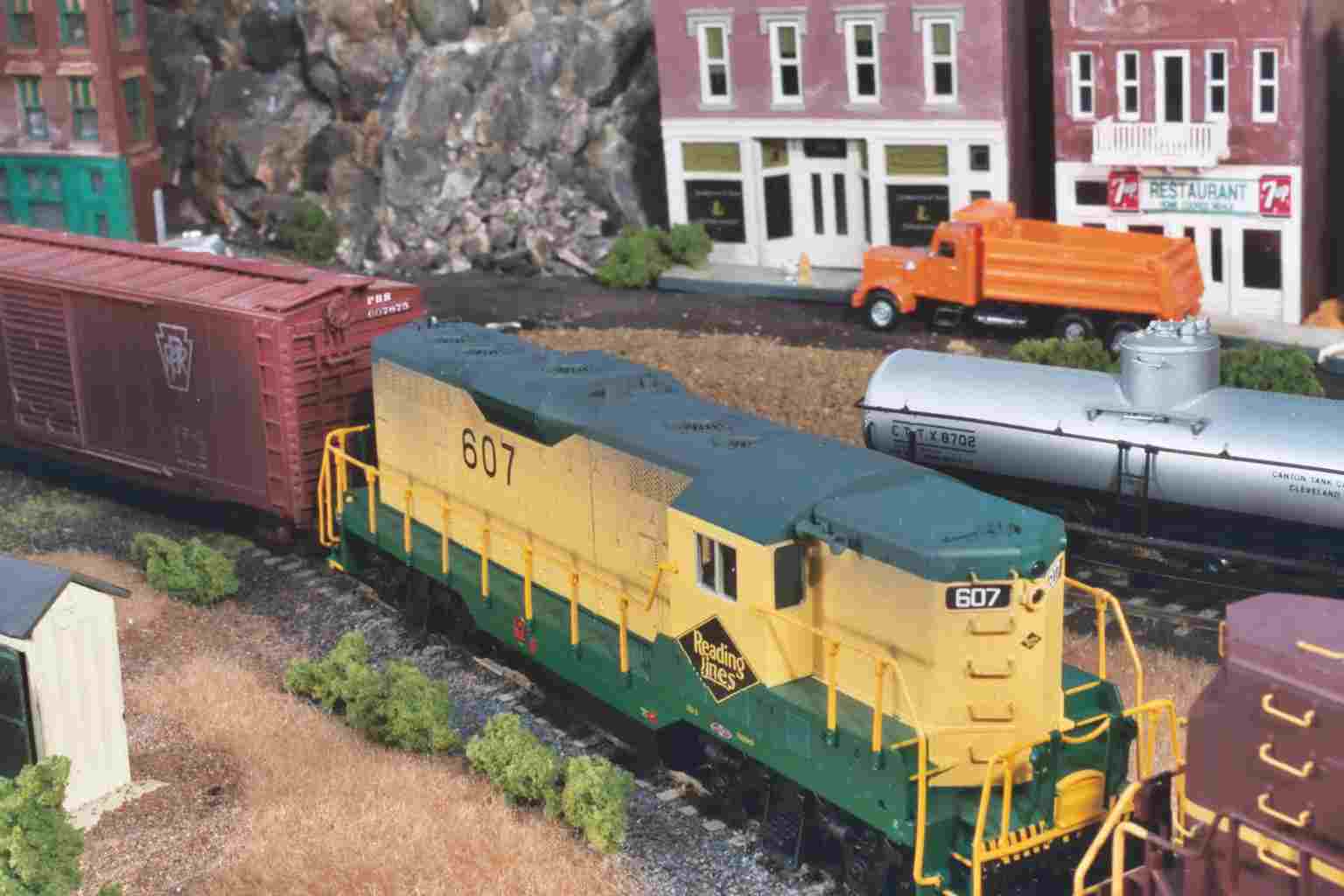 Setting the boxcar onto the team track to get it out of the way |
Luckily, the team track is empty today, so the crew will simply move the boxcar onto the team track to get it out of the way temporarily. It will move the boxcar back to American Tool and Die before it's finished its work here.
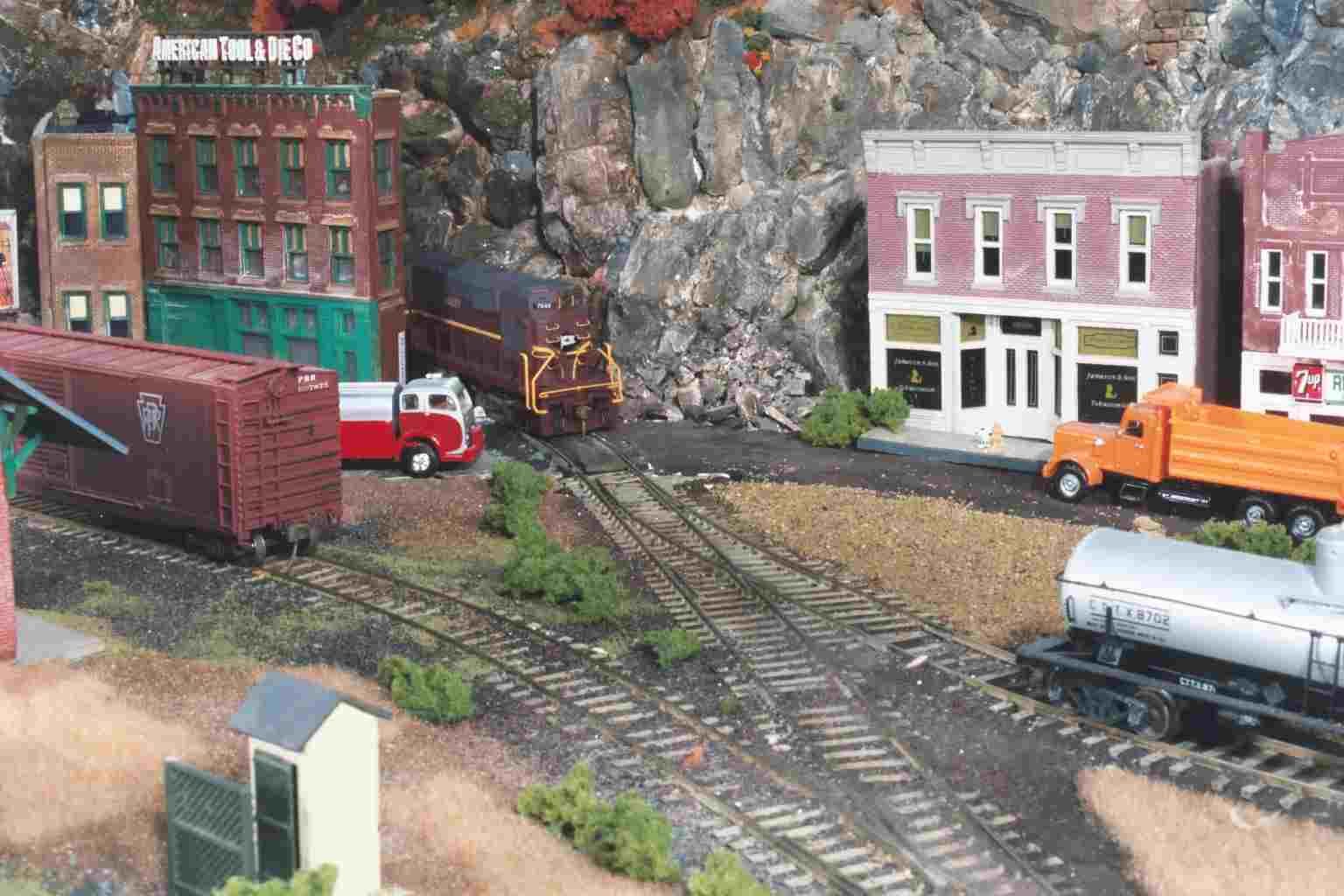 Backing into the switchback siding |
With the boxcar out of the way, the power can move onto the tail of the switchback siding.
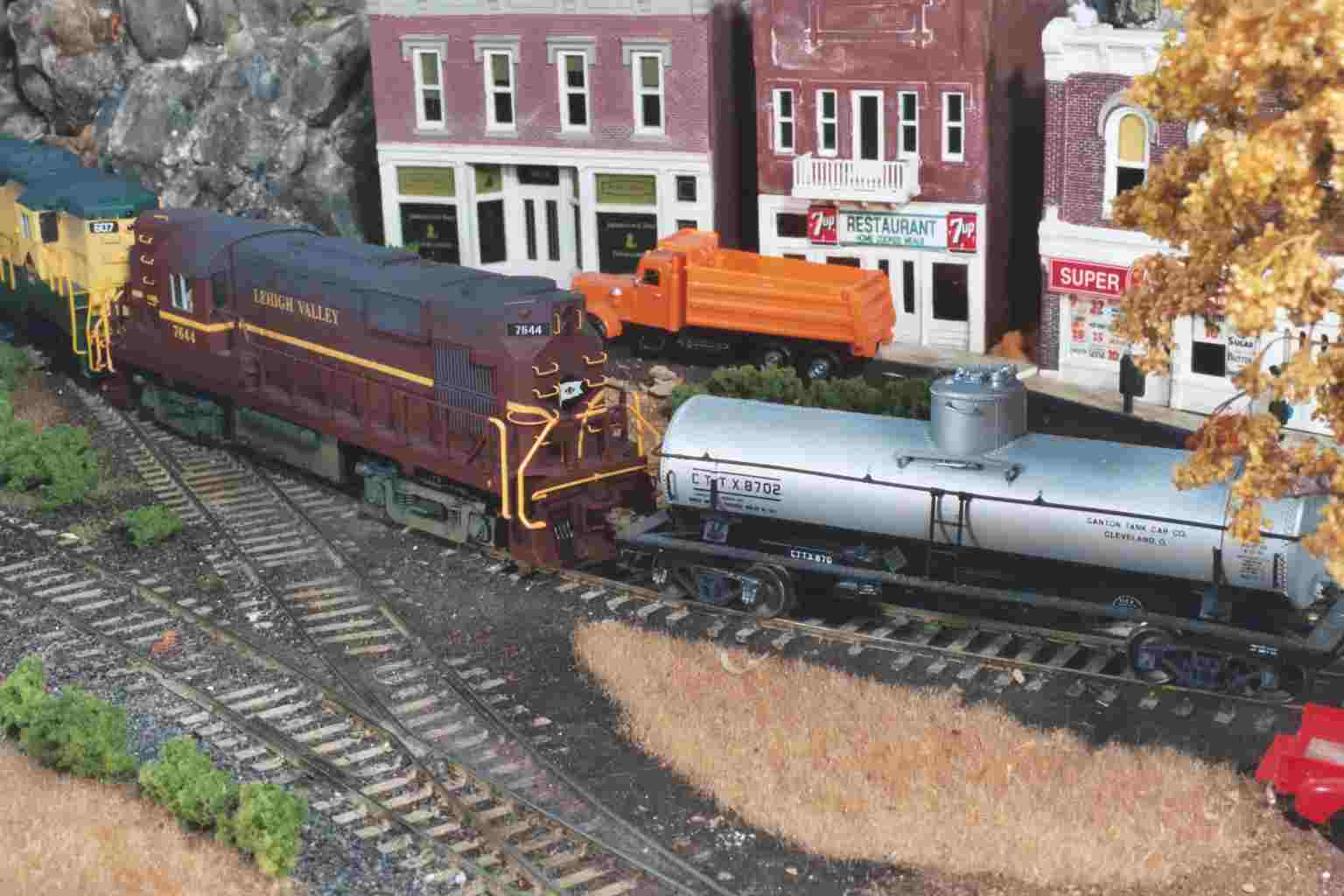 Picking up the empty tank car at Jacobs Coal |
Since there's clearance to move only one car, the power will have to move the tank car first and then come back for the hopper that's in the coal shed.
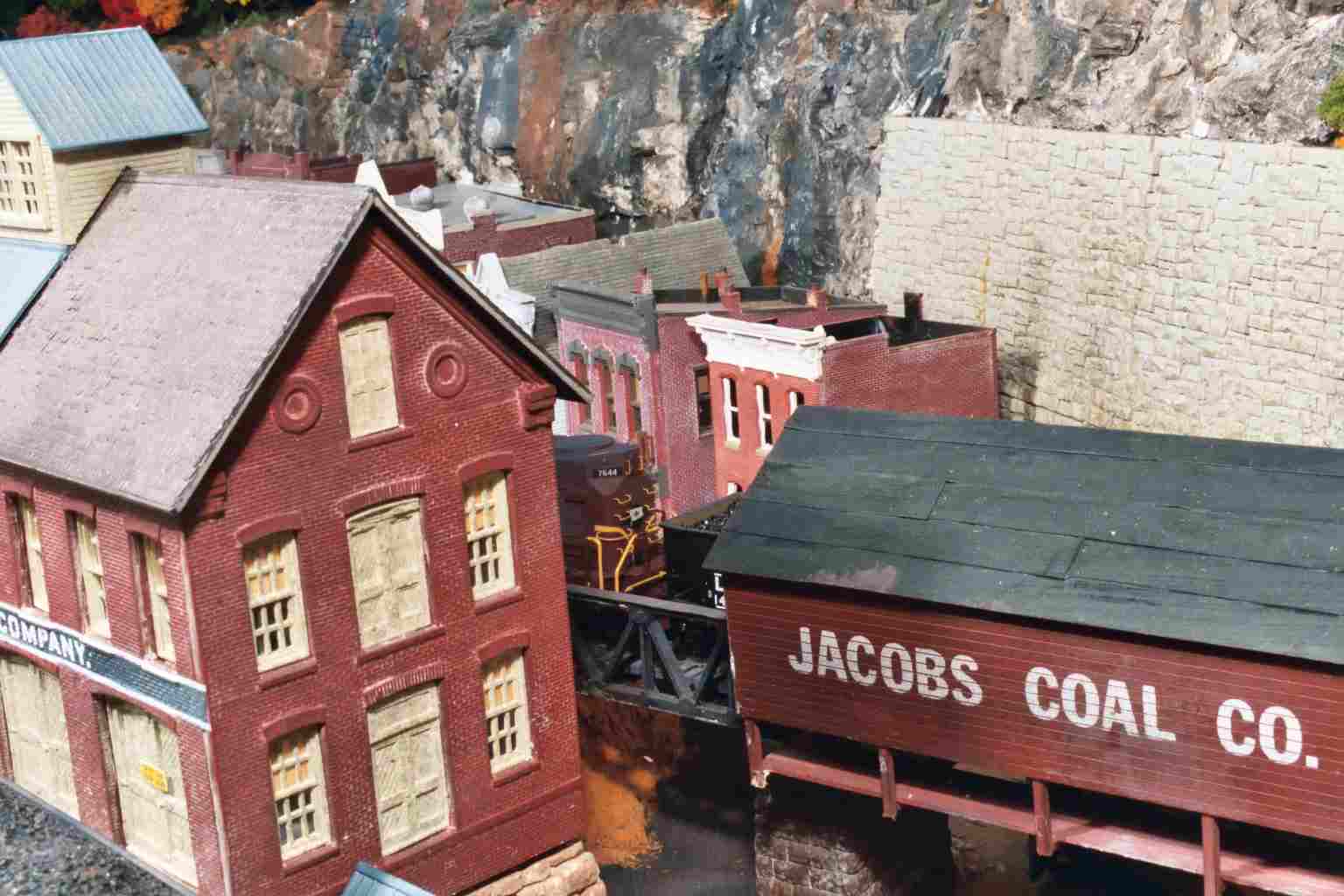 Going back for the empty hopper |
With the tank car moved, the power comes back to get the hopper. You can see the nose of the RS-11 past the Woollett Shoe Company.
State Route 17 (I'm not sure which state) winds around the Shoe Company power plant and past the Jacobs Coal bins, under a light-duty bridge that carries the coal spur. The multi-level scenery was another excellent feature of the MR project layout.
Woollett has taken on the air of a somewhat hardscrabble place, not unlike many of the towns I got to know in New England.
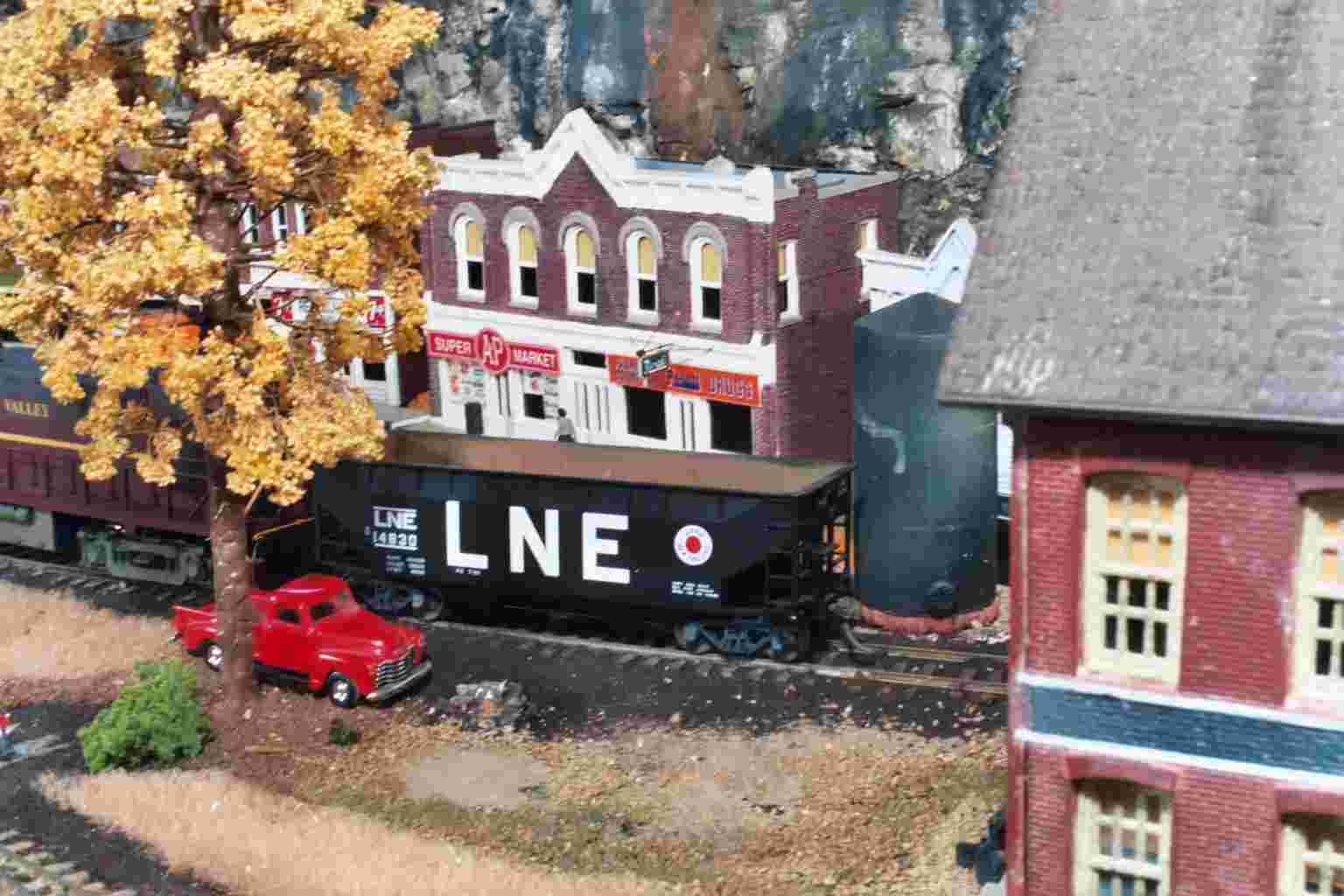 Pulling the empty hopper |
The power moves the empty hopper back via the same path. With the empties picked up and no other cars to drop, the crew can now replace the boxcar at American Tool and Die and go on to the local's next stop.
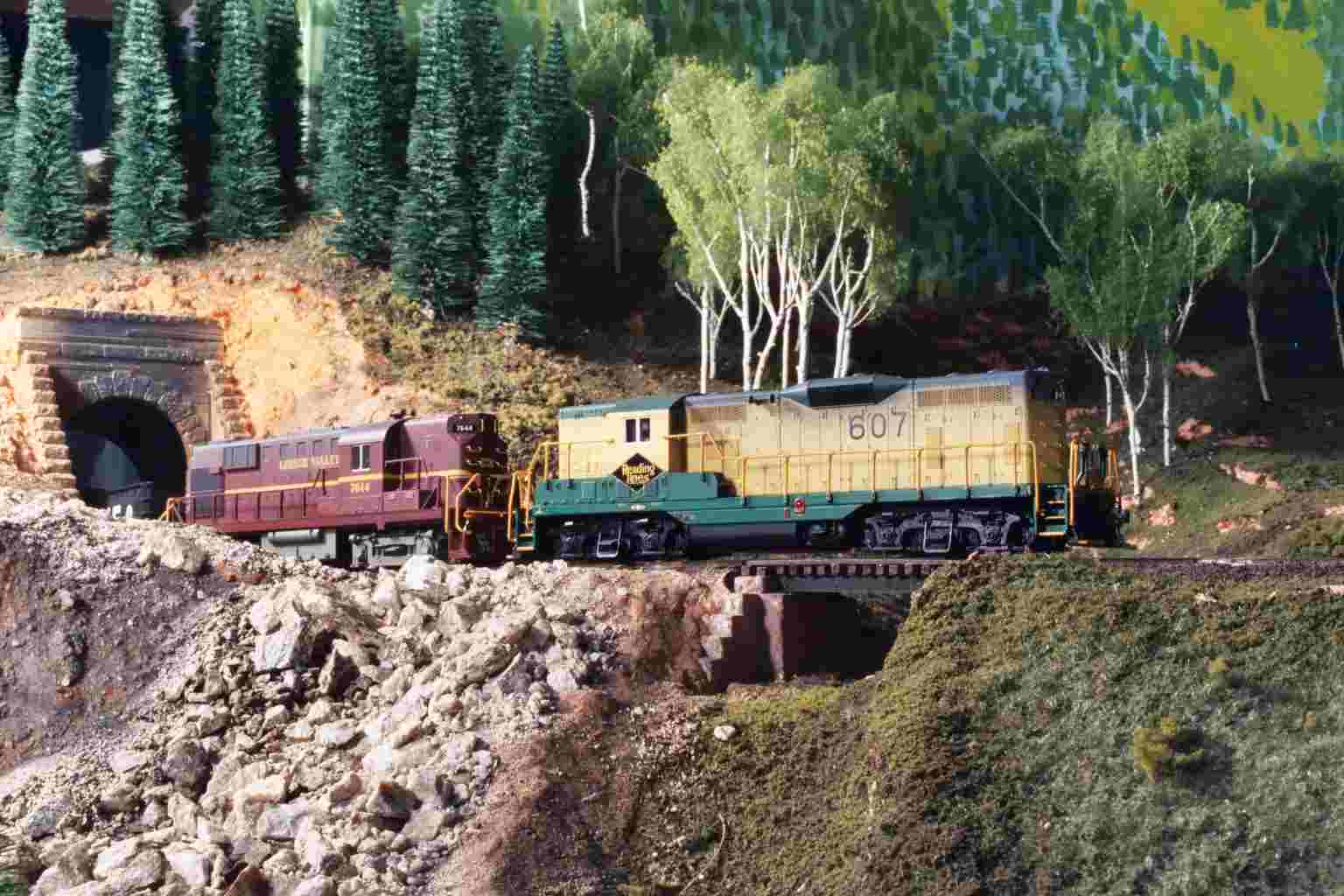 Backing into the switchback siding |
The next stop is in fact at Terrible, on the other side of Tennessee Pass. Here we see the local emerging from the Tennessee Pass tunnel. This is the highest point on the layout.
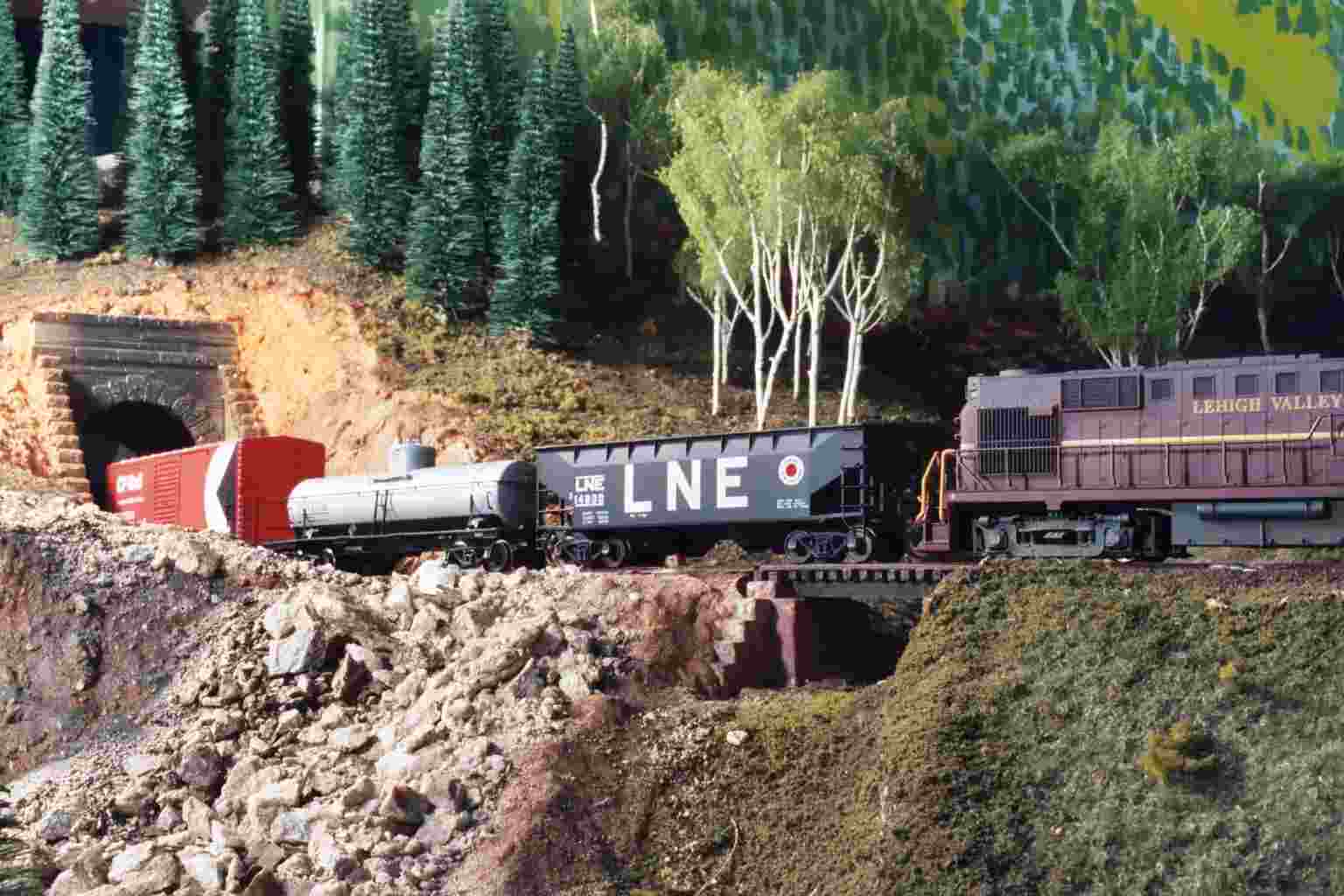 West local at Tennessee Pass |
As the rest of the train moves out of the tunnel, we can see the hopper and tank car that were picked up in Woollett.
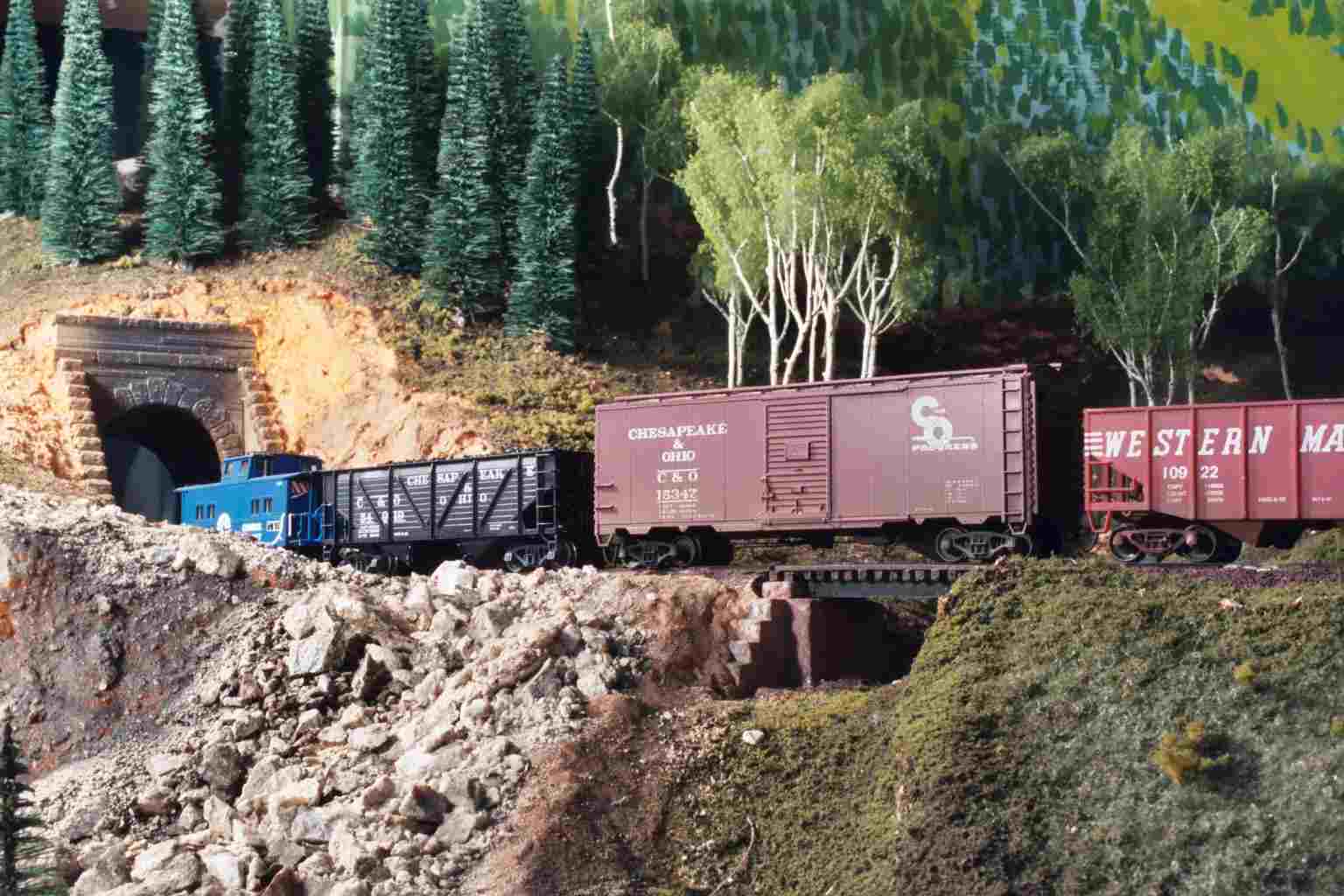 West Local at Tennessee Pass |
You can also see the CP Rail box and the Western Maryland hopper that were picked up at West Zenith.
The C&O hopper is a load of coal that will go to the Terrible Mine, which uses the coal to run its stamping mill. The C&O box will go to a fuel dealer in Bay City.
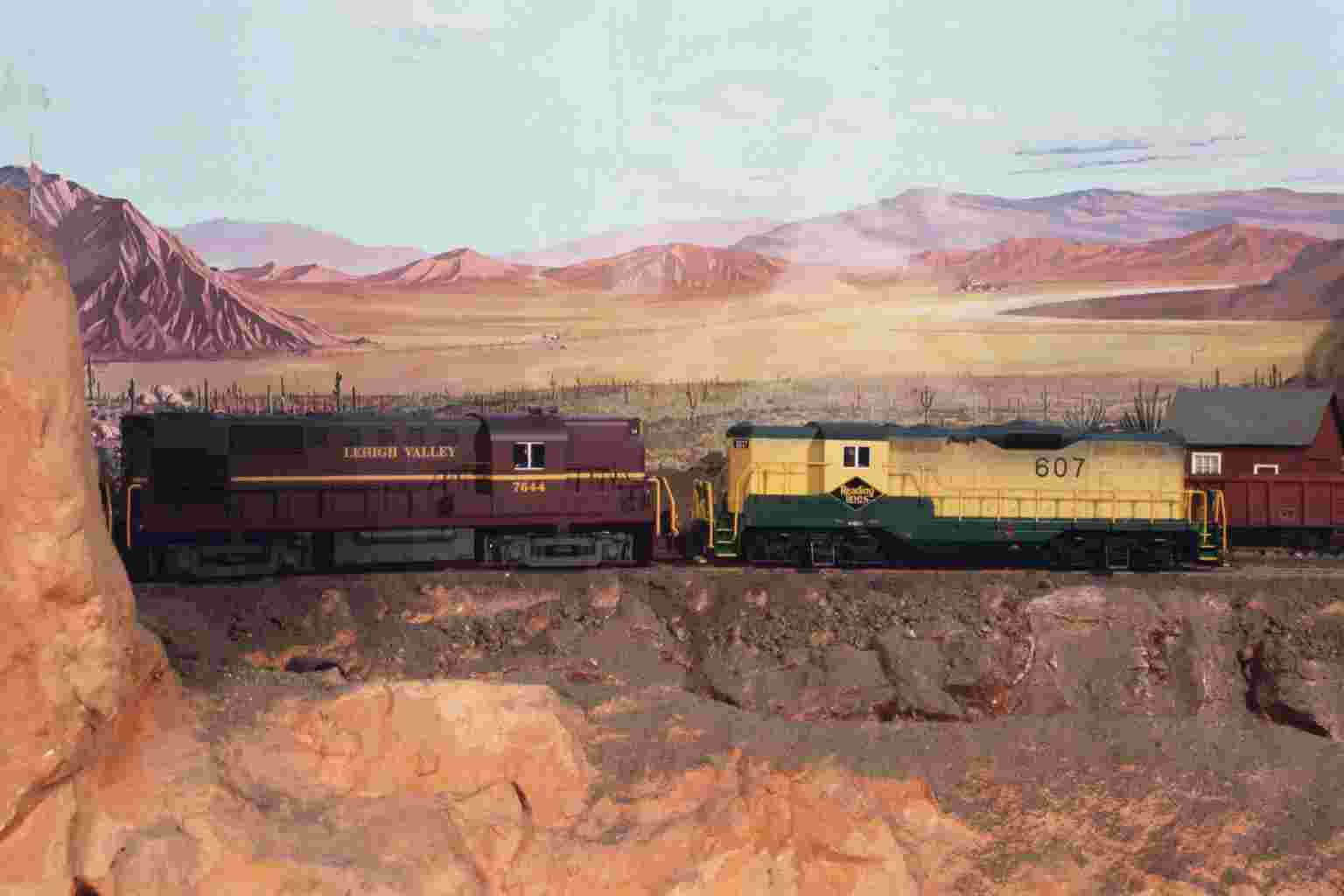 West Local approaching Terrible |
The West Local is approaching Terrible here.
January 20, 2004